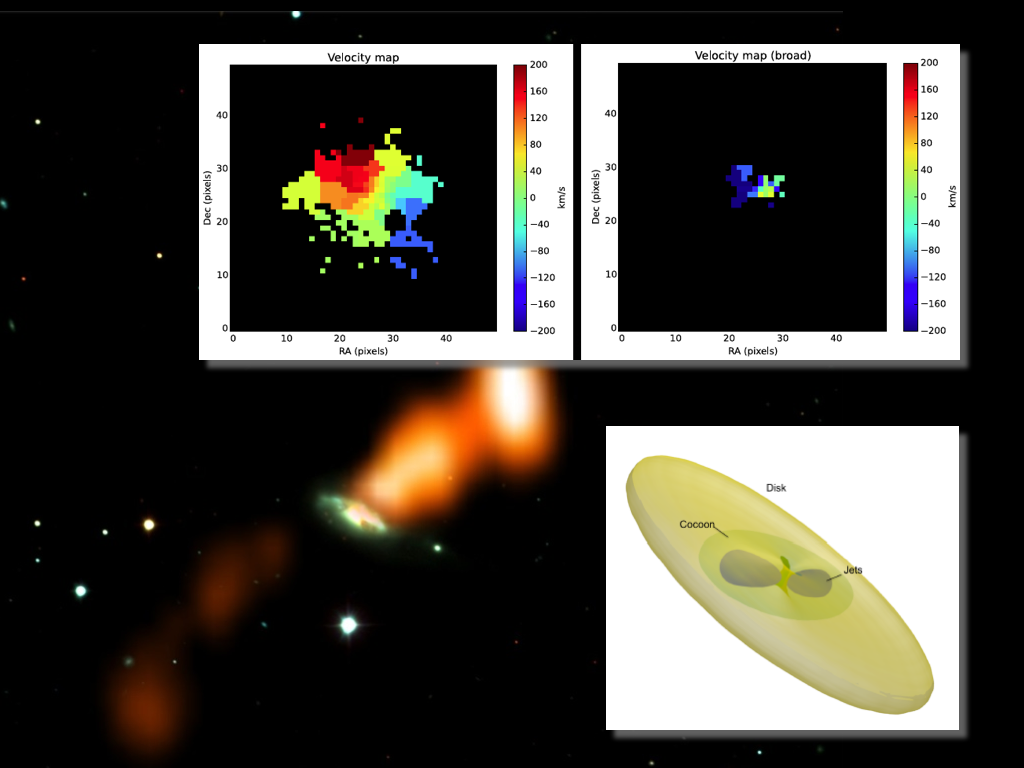Daily Image
26-01-2016Up Close & Personal with 3C293
| Submitter: | Raffaella Morganti |
| Description: | You may wonder why, with so many objects in the sky, astronomers very often focus on only one of them and spend a significant fraction of their time just to try to understand that single object in all detail. The reason is that in the objects we study we find, most of the time, very complex and puzzling phenomena. So in order to make sense of it all, we need different observations, often at very different wavelengths requiring different telescopes. And, of course, detailed state-of-the-art theoretical models. Doing all this is a very time consuming process and can be done for only very few objects at a time. However, the reward can be really worth the effort. Once we manage to explain what is going on in a single object, we can use it as starting point for a general description of an entire class of similar objects. The radio galaxy 3C293 is one of these objects; it shows many interesting physical phenomena and 3C293 is not very distant so it can be studied in much detail. In the Daily Image of 24-07-2013, we already described the very fast outflow of cold gas (with a speed of more than 1000 km/s) in this galaxy, which has been one of the extremely puzzling discoveries that the broad-band of the MFFE in the WSRT allowed us to make. This time, though, we looked at this object in the optical and we used the Integral Field Unit OASIS on the William Herschel Telescope at La Palma. In this way, we can map the spatial extent of the ionised component of the gas outflow in this galaxy. We detected, as expected, the jet-driven outflow along the inner radio lobes. However, the most interesting result is that we could establish that the outflow extends out to many kilo-parsec from the nucleus, well beyond the visible radio jets. This suggests the outflow is not directly driven by the radio jet, but that the radio jets inflate a large cocoon-like structure around them which, in turn, drives the outflow. Such cocoons are now also seen in simulations of jet-ISM interaction and they imply that the effect of the radio jets on the interstellar medium extends over a much larger region than that of the jets themselves and that they can have a profound effect on the evolution of central regions of the host galaxy. These results are presented in a paper by Elizabeth Mahony, Raymond Oonk, Raffaella Morganti and various other collaborators that has been published in Monthly Notices of the Royal Astronomical Society (and also available in the astro-ph archive http://arxiv.org/abs/1510.06498 ). We will now apply these findings to the interpretation of the growing number of galaxies where these gas outflows have been observed. With this picture in mind, we can now asses what is the role of radio jets in shaping the evolution of galaxies. |
| Copyright: | ASTRON |
| Tweet |  |
